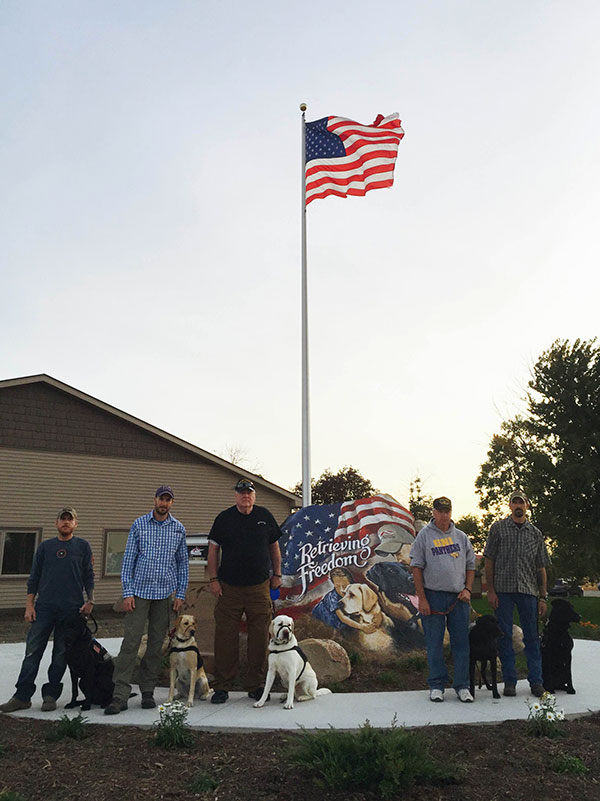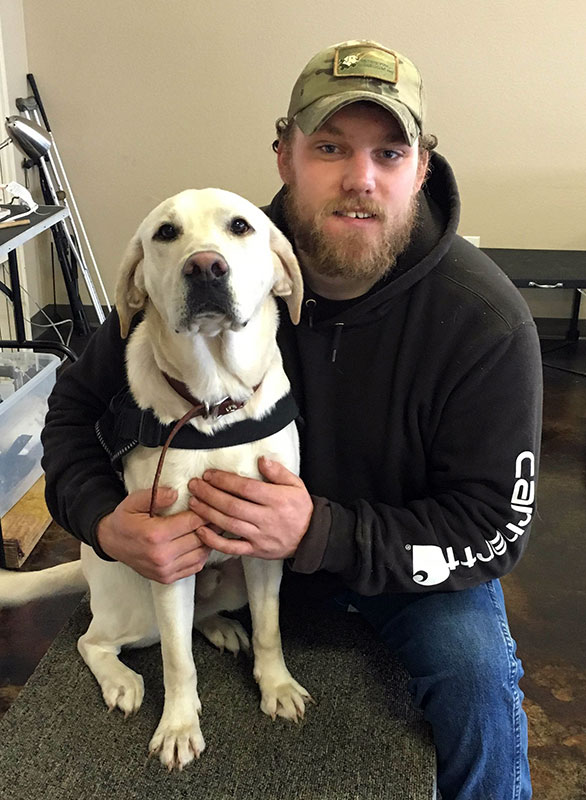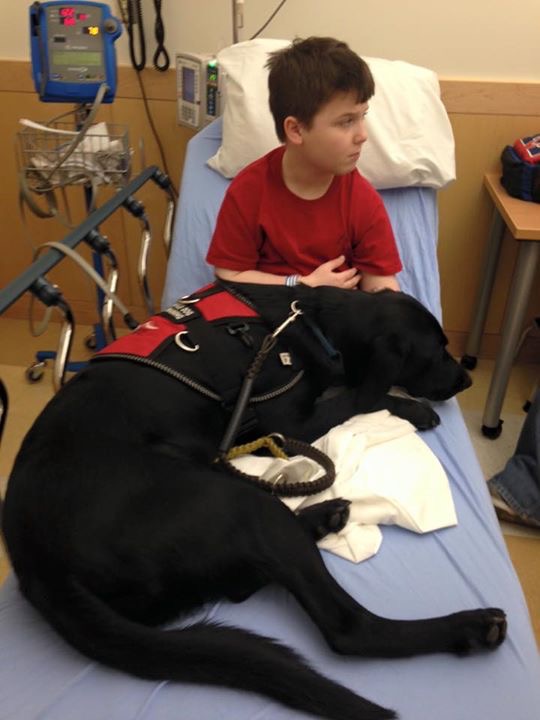Service Dogs
 How We Train Your Dog
How We Train Your Dog
At Retrieving Freedom, we have a very specific training program to make sure the service dogs we train are as ready as possible to help our clients. Our training program, however, is only one piece of the puzzle. The other pieces are formed with a natural bond between the dog and the client.
We train service dogs to help Veterans living with post-traumatic stress disorder and injuries sustained during their service and children with autism. The key to our success is matching the dog to the individual who can get the most benefit from that training.
Service Dogs for Veterans

Being disabled in a combat zone and forced to return to society as a civilian can be a difficult struggle for many Veterans. The initial stages of rehabilitation stages are well planned and implemented, but can fall short when a disabled Veteran comes home. Returning from a deployment in a combat zone should feel like a win, yet the limitations of a physical disability or post-traumatic stress can cause anything but a celebration.
Our goal is to provide independence to the lives of these special Veterans, and fight to reduce the 22 veteran suicides per day with the 24/7 support a Service Dog can deliver. The Service Dog will not only help Veterans with daily tasks, but provide companionship to help them cope with any emotional overload they may be experiencing.
Aiding with PTSD
Post-Traumatic Stress Disorder, or PTSD, is a common disorder that impacts hundreds of thousands of Veterans, causing anxiety and fear which causes changes in the body. This anxiety triggers the body’s “fight-or-flight” response, even in situations where no danger is present. This leads to a host of difficulties, ranging from higher stress levels to troubles sleeping.
Retrieving Freedom’s Service Dogs are trained to interact with individuals when they begin to feel panicked, position themselves between a Veteran and others, and interrupt night terrors. The results come in the form of a nonjudgmental living being who can provide unconditional love 24 hours a day, 7 days a week.
Other Ways Service Dogs Help Veterans
Veterans who are living with limited mobility or use an orthotic or prosthetic device can also benefit from the training Retrieving Freedom gives its Service Dogs.
Service dogs can help you by:
- Providing orientation to any prosthetic limb that needs to be retrieved
- Giving Veterans something to brace against or place their weight on for support
- Pulling and stopping wheelchairs
- Heeling that is matched to the speed of the Veteran, even ones using crutches for mobility
- Aiding in the completion of specific tasks, such as:
- Opening and closing doors, refrigerator doors and dryer doors
- Retrieving items from the refrigerator or the dryer
- Untying and removing shoes and socks
- Picking up household items such as phones and remotes
- Getting groceries off the shelf and placing items in a shopping cart
- Pushing elevator buttons
- Pushing panic buttons in case of emergency
 Service Dogs for Children with Autism
Service Dogs for Children with Autism
No child is impacted by autism in the same way. The Centers for Disease Control* estimates that one in every 44 children lives with autism, each falling at various points on the autism spectrum.
Retrieving Freedom trains Service Dogs who are matched to meet the needs of a specific child. Not only does this help the child excel, but it can reduce lifelong costs associated with the child’s care.
*Source: https://www.autismspeaks.org/what-autism/prevalence
How Service Dogs Aid Children with Autism
Aside from helping children with autism become more social and improving verbal skills, Retrieving Freedom's Service Dogs' training also helps individuals with autism in several other ways.
- Tether Training: The child is tethered to the dog’s service vest via a strap on their belt or on a harness. The dog is trained to sit or lie down and act as an anchor any time the child pulls forcibly on the tether or if the tether becomes tight.
- The dogs help relieve anxiety and provide comfort by snuggling with the child in times of stress.
- The child can instruct the dog to retrieve items, which helps develop a bond between the dog and the child and gives the child a constructive activity to do with their companion.

